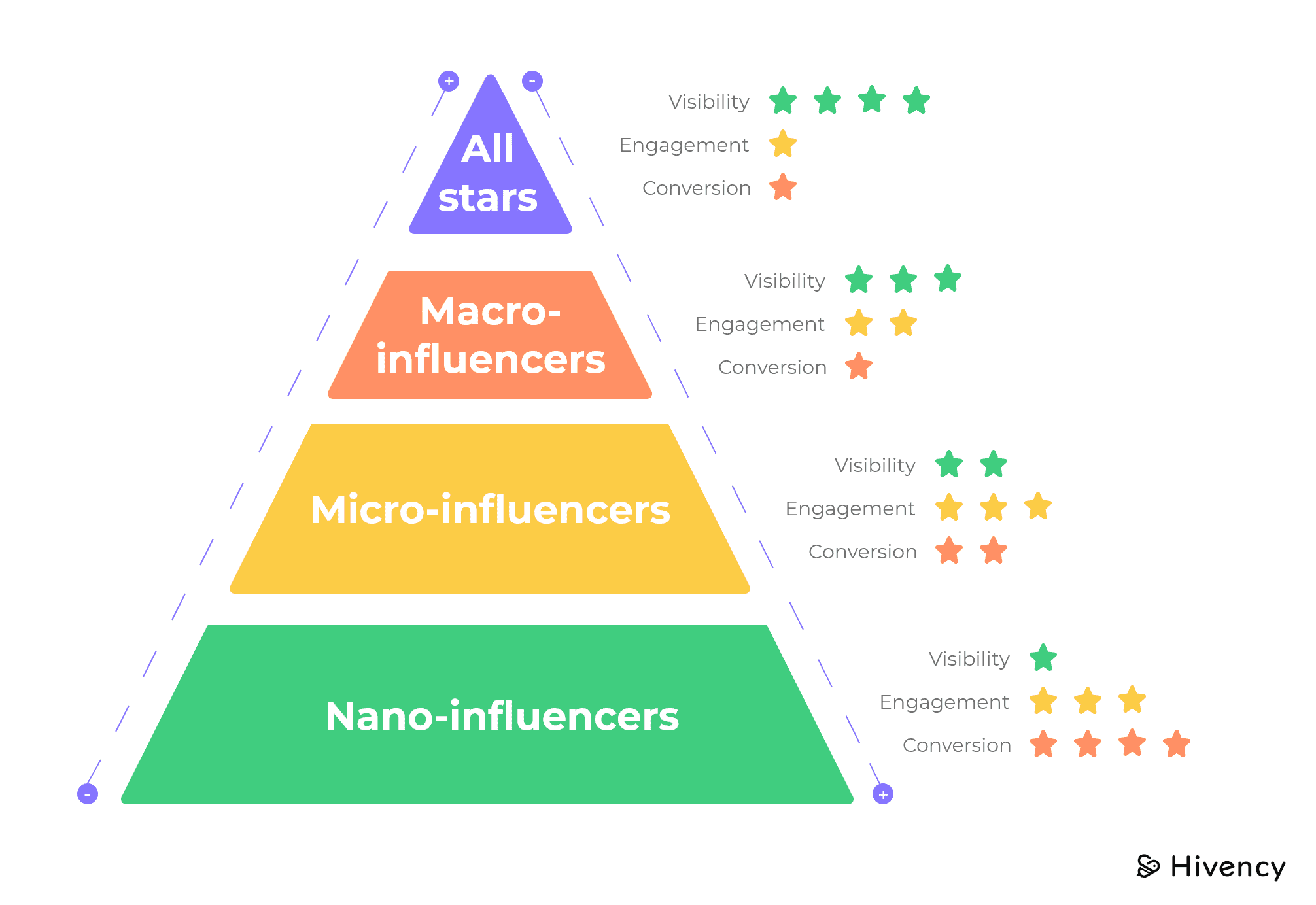For many years, celebrities were thought of as the only influencers. Nowadays, we can easily count four different types of influencers: the all-stars (celebrities), the macro influencers, the micro influencers and the nano influencers. Discover who they are through our infographic, what sets them appart and what each of their strengths are. © Infographie Hivency...
For many years, celebrities were thought of as the only influencers. Nowadays, we can easily count four different types of influencers: the all-stars (celebrities), the macro influencers, the micro influencers and the nano influencers.
Discover who they are through our infographic, what sets them appart and what each of their strengths are.

© Infographie Hivency
Number of followers
All stars are celebrities that amass thousands and sometimes millions of followers thanks to their talent. Celebrities typically make up the list of best paid influencers of the year. In 2022, the highest paid influencers on Instagram are Cristiano Ronaldo in first place and Dwayne (The Rock) Johnson in second.
Next on the ladder we’ve got macro influencers. These profiles have more than 100k followers, and can sometimes have even as many or more than some celebrities. The thing that sets celebrities and macro influencers apart? Macro influencers make their living off of social media and have steadily built their community on social media from the ground up. Celebrities have careers built in different sector, which earn them a following throughout social media platforms.
Micro influencers are very qualitative profiles that have less than 100K followers. They’re very engaged with their audience and typically create content around a very specific niche.
Finally, nano influencers are profiles with 5000 followers or less. They have a very close-knit community, and their relationship with their followers most resembles a friendship.
To identify the influencer profile most suitable and efficient for your influencer marketing campaign, you need to have very clear objectives, a knowledge of your consumer audience and of the actions you want to launch. Ideally, your target audience and the influencer’s community should ressemble each other. As we’ve previously mentioned, micro influencers tend to focus their content around a certain “niche” topic or subject, it’s one of their strengths. This makes it easier for you, as a brand, to be able to pinpoint and choose the appropriate ones for your brand based on their content.
To discover more about the different collaborations you can launch with micro influencers, the latest trends of social media and the rising power of nano influencers, we invite you to read our article about 14 figures to know about influencer marketing in 2022.
2021: launching campaigns with consumers to promote your brand
When it comes to collaborations, these influencers generally have very solid, long term relationships with brands. More and more brands are letting their consumers speak up about them on social media or through fidelity programs. These brands have understood the interest of transforming consumers in quality brand ambassadors.
In 2020, collaborations with micro influencers have become much more frequent and most brands have, by now, realised the true potential of these brand ambassadors. 2020 also saw the timid start of collaborations with consumers, a trend that will be cemented in 2021. Nano influencers transmit much more authentic and powerful messages to their community than any other kind of influencer.
Other brands, such as certain luxury houses, have started collaborating with virtual influencers. This differentiates them and is a token of creativity.
The influencer platform SKEEPERS helps you identify the right influencers thanks to a matching system and to then evaluate those profiles thanks to a secure Fame Check: a tool that allows brands to verify the online notoriety of influencers (their followers, views, engagement rate, the quality of their audience) before setting up campaigns. The collaborations are aided through a logistics system and the possibility of track the performance of each individual post as well as to optimise a brand’s entire influencer marketing strategy with micro influencers.







